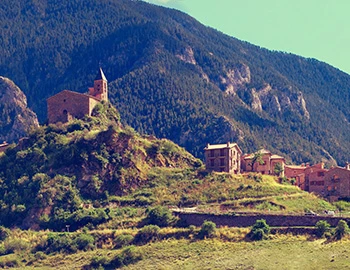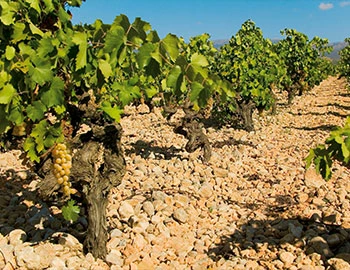Cims de Porrera Clàssic 2017
DOC Priorat, Cims de Porrera, 750 ml

Description
This single-varietal wine from the Cariñena grape is a Priorat fan's must-try! Dense and concentrated nose, with seductive aromas of black forest berries. Powerful and full-bodied on the palate with fine vanilla tones, beautifully integrated oak notes and soft tannins. Very good length with a mineral touch typical of Priorat. An extremely concentrated wine with class and style that has great potential for development and ageing.
Attributes
| Origin: | Spain / Catalunya / Priorato |
| Grape variety: | Carignan |
| Label: | Vegan |
| Ripening potential: | 4 to 15 years |
| Drinking temperature: | 16 to 18 °C |
| Food Pairing: | Saddle of lamb fillet with herb jus, Bistecca fiorentina, T-Bone steak, Wild fowl, Châteaubriand, Filet Wellington, Roast saddle of venison, Spicy hard cheese |
| Vinification: | long must fermentation, Pumping over |
| Harvest: | hand-picking, in small boxes |
| Maturation: | in large wooden barrel/foudre, long cultivation, some months bottle storage before sale |
| Bottling: | filtration |
| Maturation duration: | 14 months |
| Volume: | 15.0 % |
| Note: | Contains sulphites |
Carignan
Fervid oddball
The red Carignan is a heat-loving Mediterranean grape. It has a bit of everything over other varieties: more colour, more tannins, more acid. It is not easy to press a harmonious wine from it alone. Hence it is most often encountered as a blend partner, as in the Côtes du Rhône wines. In Spain it is called Mazuelo and is part of the traditional Rioja recipe. It provides the wines’ acidic backbone. The most exciting varietal specimens come from the slate slopes of the Catalan Priorat (named here Cariñena), from old bush vines in Chile or from Sardinia, where it is known as Carignano. When pressed properly, this oddball generates a lush bouquet of plums and dark fruits. Its origins lie in the northwest Spanish Aragon, near the town of Cariñena. The surrounding wine area is also named after it. In order to prevent confusion with the vine, it is called Samsó there.

Priorato
Priorat: Vergessen, wiederentdeckt, gefeiert…
Noch anfangs der 80er Jahre war das Priorat eine durch die Abwanderung geschwächte Problemregion. Dann entdeckten vier junge Winzer den verlassenen Talkessel, der nur eine Autostunde von der katalonischen Mittelmeerküste entfernt liegt, und begannen mit der Restauration der alten Rebanlagen. Heute sind die Priorat-Weine, die meistens von den alteingesessenen Sorten Garnacha und Cariñena geprägt werden, weltweit gefragt. Dank der spektakulären Renaissance der Priorat-Weine erlebt die ganze Region einen Aufschwung.

Catalunya
Catalonia: the great range
Spain’s second largest wine region has an impressive variety to offer. As a result, there are eleven different designations of origin in Catalonia. As the home of cava, Catalonia is one of the leading producers of sparkling wines produced according to classical methods. There is a wide selection of both elegant white wines and well-structured reds. Areas such as Priorat or Montsant have experienced an enormous upswing in recent years. The traditional sweet wine Moscatel de Sitges is also produced here.

Spain
Spain – Variety and perfection
“Somewhere in la Mancha, in a place whose name I do not care to remember...,” begins Don Quixote's odyssey.
The most famous part is definitely when Don Quixote thinks windmills are his enemy and wants to fight them – until they nearly kill him. It’s possible there was a bit too much of the La Mancha wine at play. Spanish vines fight for their survival in rugged landscapes, battling fierce drought and rough soils. But they fight well.



